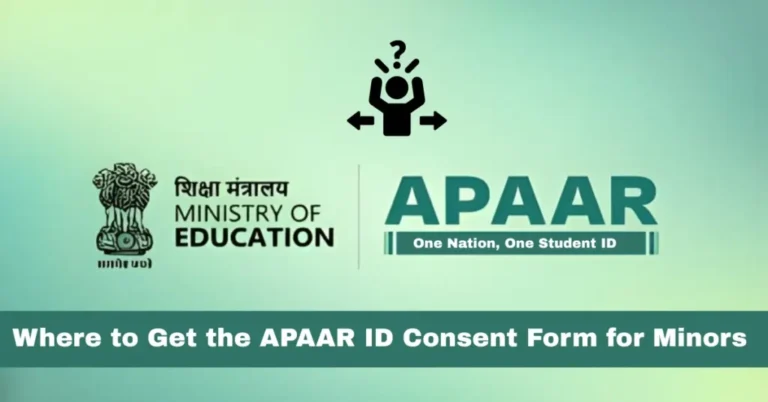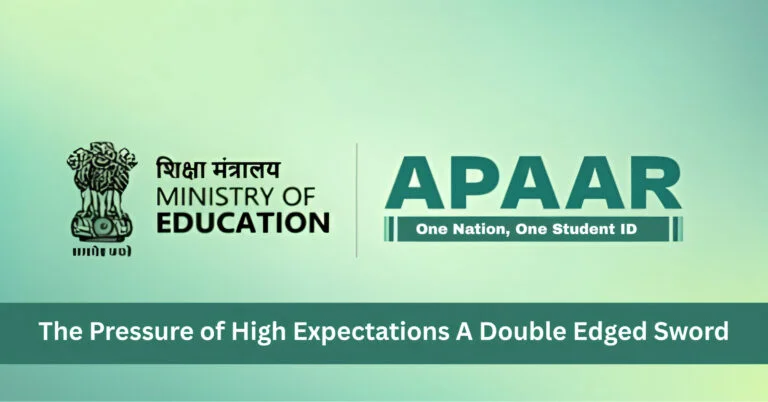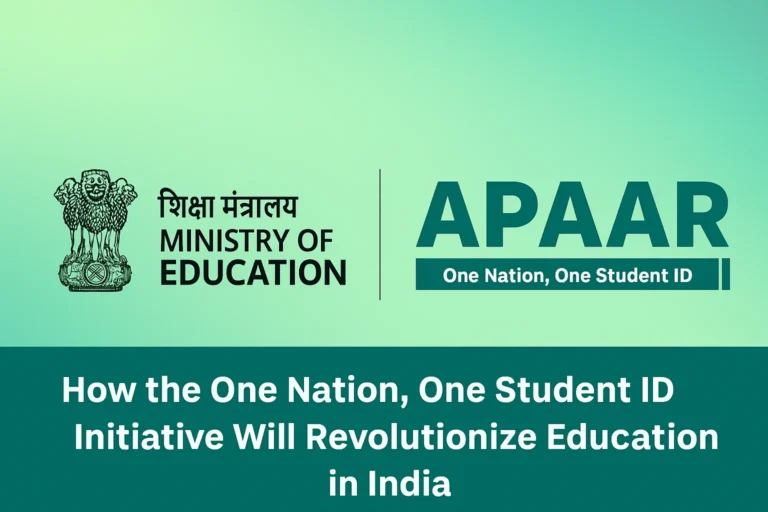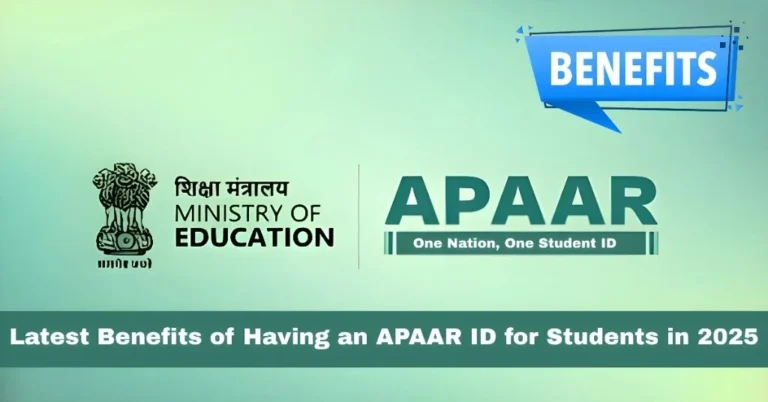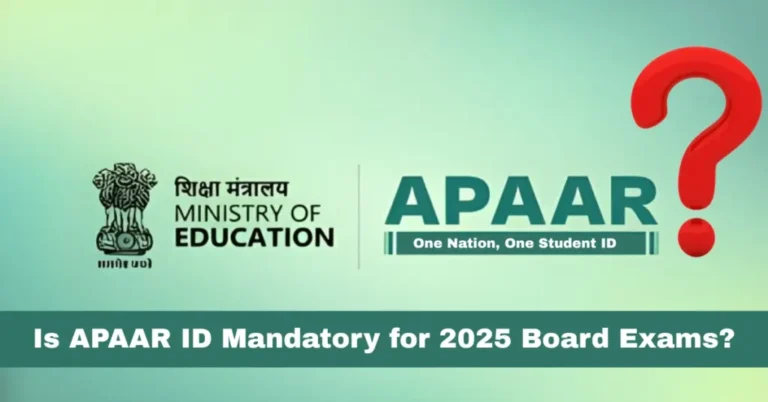APAAR ID: Tracking Academic Records and Achievements Made Easy
The digital transformation of India’s education ecosystem has accelerated in recent years, aiming to improve efficiency, transparency, and lifelong learning opportunities. A major innovation supporting this vision is the APAAR ID (Automated Permanent Academic Account Registry).
This unique digital identity enables every student in India to store, track, and access their academic records and achievements seamlessly. By simplifying documentation and verification, APAAR ID eliminates traditional hurdles and ensures that educational progress remains transparent, secure, and universally accessible.
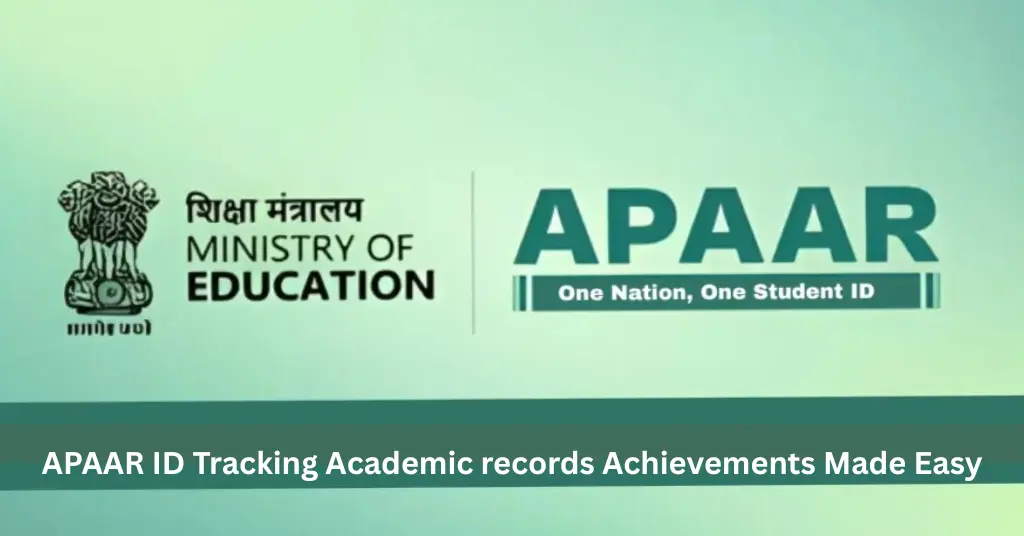
What Is the APAAR ID?
The APAAR ID serves as a lifelong academic identity number for each learner across India’s educational institutions. Managed under the Academic Bank of Credits (ABC), it consolidates students’ academic data—from school to university—into a single, digital record.
This means every course, exam result, certification, or skill achievement becomes part of one unified, verifiable academic profile.
Why India Needed a Unified Academic Tracking System
For decades, managing educational records has been a fragmented process involving manual documentation, multiple institutional databases, and paper certificates. Students often faced difficulties retrieving lost credentials or transferring between institutions.
The APAAR system solves these long-standing challenges by providing:
Integration with the Academic Bank of Credits (ABC)
The Academic Bank of Credits (ABC) serves as the foundation of the APAAR system. Every student’s academic credit information—earned from recognized institutions—is deposited in their personal ABC account.
This integration allows for smooth credit transfer, enabling learners to pursue flexible, multidisciplinary education pathways in line with NEP 2020 goals.
Simplifying Record Management Through Automation
APAAR ID automates the entire process of educational record management:
This eliminates paperwork, manual verification, and administrative delays.
Connecting with DigiLocker for Secure Data Storage
Through DigiLocker integration, APAAR ensures that all academic credentials are securely stored in a government-verified digital vault. Students gain 24/7 access to authentic, digitally signed documents that carry legal validity under the Information Technology Act, 2000.
This partnership guarantees data authenticity while promoting a paperless, eco-friendly academic ecosystem.
Tracking Achievements Made Simple
Whether a student completes a short-term course, earns a diploma, or receives a university degree, every credential becomes part of the same APAAR account.
This allows learners to:
Benefits for Students
Students are at the core of the APAAR system. Some key advantages include:
Benefits for Educational Institutions
APAAR also streamlines operations for schools, colleges, and universities by:
Advantages for Employers and Agencies
Employers can verify candidates’ academic qualifications directly through authenticated APAAR data, reducing time and fraud risks. Government agencies and scholarship boards also benefit from reliable, real-time verification.
Data Security and Privacy
Security and confidentiality are central to APAAR’s design. The system uses:
Only authorized users can access records, ensuring trust and transparency at every level.
Enabling Lifelong Learning
APAAR supports the principle of lifelong learning promoted by NEP 2020. Since all educational achievements are permanently stored, learners can continuously add new qualifications, switch disciplines, or resume studies without losing past records.
Transparency and Accountability in Education
By digitizing the record management process, APAAR reduces human errors, eliminates document forgery, and promotes transparent governance. It also strengthens trust between students, institutions, and employers through verified data sharing.
Simplifying Transfers and Admissions
APAAR ID simplifies student transfers across universities, boards, or states. Instead of submitting multiple paper documents, students can grant access to their verified records digitally, enabling instant validation and admission decisions.
Facilitating National Education Policy Implementation
APAAR plays a crucial role in implementing the National Education Policy (NEP) 2020, particularly in promoting credit accumulation, flexible curriculum choices, and multidisciplinary learning. It bridges the gap between policy and practice by making data management seamless.
Reducing Administrative Workload
Digital recordkeeping significantly reduces institutional workloads. Automation through APAAR enables faculty and administrators to focus on academic quality rather than documentation.
This contributes to operational efficiency and better governance in education.
Encouraging a Paperless Education Ecosystem
By eliminating paper certificates and manual verifications, APAAR supports India’s sustainability and green campus initiatives. Digital documents not only save resources but also simplify logistics for millions of students nationwide.
Challenges and Future Scope
Although highly beneficial, APAAR’s implementation faces challenges such as:
However, government initiatives under Digital India and NDEAR (National Digital Education Architecture) are addressing these barriers through training and improved digital access.
The Future of Academic Tracking
The next phase of APAAR may involve:
These advancements will make academic record management even more secure, intelligent, and student-friendly.
Frequently Asked Questions (FAQs)
1. What is the main objective of APAAR ID?
To create a unified, lifelong digital record of students’ academic achievements and simplify verification across institutions.
2. How does APAAR track academic achievements?
Institutions upload verified credentials directly to the Academic Bank of Credits, which syncs with each learner’s APAAR profile.
3. Is APAAR data secure and private?
Yes. It uses encryption, consent-based sharing, and authentication protocols to ensure complete data security and privacy.
4. Can employers verify student records using APAAR?
Yes. Employers can instantly verify candidate credentials through APAAR’s authenticated records.
5. Does APAAR replace traditional certificates?
Not entirely—it digitizes and secures them, ensuring that physical copies are no longer mandatory for verification.
Final Thoughts
The APAAR ID represents a monumental leap in India’s education technology framework. By integrating academic records, credits, and achievements into one secure system, it simplifies data management, verification, and lifelong learning for millions of students.
Through collaborations with DigiLocker and Academic Bank of Credits, APAAR ensures that every credential remains authentic, accessible, and permanent. This initiative not only streamlines academic processes but also strengthens India’s position as a global leader in digital education governance.
APAAR truly makes tracking academic records and achievements easy, reliable, and future-ready.
